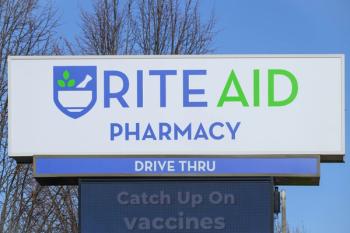
- Drug Topics October 2021
- Volume 165
- Issue 10
Diversify Your Revenue Streams
Pharmacies can take advantage of alternative revenue opportunities to boost their bottom line.
Today’s pharmacies must install diverse or alternative revenue opportunities to boost profits. This can mean revamping their front end, expanding on services such as specialty pharmacy medications, or partnering with health care providers or hospitals in the area. It can even entail offering tailored services to their patients such as smoking cessation, weight-loss counseling, or nutrition guidance.
“In the changing landscape accentuated by pharmacy benefit managers, the profit margins that have previously supported pharmacists’ salaries and the cost of running independent retail pharmacies have been borne on the spread of the product,” says Paige Clark, RPh, vice president of pharmacy programs and policy at Prescryptive Health. “That reimbursement model, in many cases, can no longer support independent pharmacies.”
Therefore, building a robust and significant clinical services provision is essential to the success of all community pharmacies. Jennifer Donovan, PharmD, vice president of clinical services at Shields Health Solutions in Stoughton, Massachusetts, notes there is a need to balance how to deliver high-quality care while o setting the costs of caring for patients who are underinsured or not insured.
“Finding alternative ways to generate revenue is necessary to ensure all patients, regardless of ability to pay, have access to high-quality health care,” Donovan says.
Avenues to Explore
JoAnn Sanborn, BSPharm, owner and vice president of operations for Hudson Pharmacy in Hudson, Michigan, notes that due to decreasing profits for prescription drugs, which are the main source of business, she often looks to outside sources to help stay in business. These include point-of-care testing, immunizations, hormone replacement therapy consultations, medication therapy management, and complimentary medicine consultations.
Shelley Roberts, PharmD, owner of Grassroots Pharmacy in Lexington, Kentucky, shares that during the first part of the COVID-19 pandemic, the pharmacy’s front-end sales were severely depressed, although prescription sales went up.
“The reduction in cash flow that resulted really drove home the point of how important those sales truly are,” Roberts says.
“We have a thriving smoothie business and gift shop that bring in cash daily versus waiting on insurance reimbursement checks. It is so important to diversify all aspects of your business to account for when one piece is affected.” In Kentucky, there are numerous board-approved protocols that the pharmacy is beginning to delve into to create multiple revenue streams.
“From the beginning, we have looked for ways to be different—the look of our store, the offerings, the atmosphere,” Roberts says. “To be successful, you either have to be unique or do the same thing better than everyone else. With the big boxes’ hold on the market, it is hard to beat them on price, so we don’t try to.” In many states, public health departments are highlighting the fact that community pharmacists are trusted and highly accessible resources. Under the crisis of COVID-19 and the Public Readiness and Emergency Preparedness Act, all pharmacists can provide testing services to detect COVID-19. Additionally, as of September, pharmacists are empowered to provide monoclonal antibody treatment to patients who are positive for or have been exposed to the disease.
“So, we now truly have…testing, treatment, and immunization services that are comprehensive for serving our communities in the fight against COVID19,” Clark says. “This is a great revenue opportunity to look into right now.” “The state of Oregon was among the early adopters of the concept of pharmacists being enabled to provide subcutaneous injections of REGEN-COV [casirivimab and imdevimab] to COVID19–positive patients,” Clark continues.
“As such, the Oregon Board of Pharmacy with leading subject matter experts built a comprehensive clinical protocol to guide pharmacists through patient care. We have incorporated that resource into our turnkey solution at Prescryptive. Not only is the protocol available for utilization, Prescryptive has then built the model policies and procedures needed for independent retail pharmacies to operationalize this...service.”
Among other revenue opportunities, 15 states have extended pharmacists’ ability to provide birth control services to patients in some form. Other states have allowed pharmacists to provide services for tobacco cessation and postexposure and pre-exposure prophylaxis for HIV prevention. “In all cases, expanding clinical services and pharmacist scope of practice relate to meeting unmet public health needs,” Clark explained.
“My tendency is to advise pharmacists to move into areas that are directly reimbursable at a state level by Medicaid, such as birth control prescribing.” Trieu Bao, PharmD, of Soleil Pharmacy in Glen Burnie, Maryland, notes that pharmacists have excellent training that goes beyond filling prescriptions.
“As clinicians, we are driven to provide many other services for the overall health of our clients, thus improving patient outcomes,” he says. “As [many of us are] immigrants, we understand the unique needs of those from a multitude of cultures and provide culturally competent care. Then, we want to be sure they know where and how to get access to other elements of their health care.” As a Clinical Laboratory Improvement Amendments–certified pharmacy, Soleil Pharmacy offers COVID-19 testing.
They also provide international normalized ratio and glycated hemaglobin tests when appropriate for the patient and their care plan. “We o er and deliver in our pharmacy—or in other locations—many types of vaccines,” Bao says. “We are currently finalizing a plan to have primary care telehealth available in our pharmacy or in the homes of the uninsured population in our community.” As recent recipients of the National Community Pharmacists Association Diabetes Prevention Program grant, the pharmacy is also expanding its diabetes services in 3 languages.
“We have found if you focus on the unmet needs in your community and the unique strengths of your staff, you can create something pertinent and of great value,” Bao says. Soleil Pharmacy focuses on vaccinations, common medications, and supplies that support hospital discharge and make the discharge process easier for patients and caregivers.
“We have reconsidered the products we carry and removed the feeling of being crowded in the front of our store,” Bao says. “We are intentionally making it easier for the pharmacist or technician to acknowledge the patient upon entry and for patients to have access to items that will benefit their health journey.”
Clark adds that pharmacies that have not carved in private patient care spaces need to consider doing so, as soon as possible.
Revamping the Front-End
Making changes to the layout or design of the pharmacy could also attract new customers. This has been key to many older pharmacies bringing in people and getting them interested in new services. Because Grassroots Pharmacy has been open for less than 5 years, Roberts feels fortunate that the store does not need a facelift yet.
However, the pharmacy does consistently change the merchandise and store layout. “Keeping things fresh is important,” she says.
Partnering With Hospitals and Health Care Facilities
In some cases where collaborative practice agreements (CPAs) are required, partnering with other providers or organizations can be helpful in bringing in new revenue. “Partnering with health care providers and health systems allows for the best patient care,” Donovan says.
“The patient stays integrated within the health system and information is accessible by all health professionals in the multidisciplinary team. Integrating pharmacy services into care is necessary to drive meaningful changes in patient outcomes.” One strategy Donovan has found to be successful is aligning specialty pharmacy programs with the health system’s accountable care organization and at-risk populations to further drive quality and value.
“Developing programs and strategies to help the at-risk population has [been] shown to improve patient care and lower total medical cost,” she says. Hudson Pharmacy has a practice agreement and offers point-of-care testing with a local physician. “Early on in the pandemic, before we were able to obtain product, both the local health department and hospitals offered vaccines for us to vaccinate the elderly in long-term care facilities [who had been] missed, as part of a federal initiative,” Sanborn says.
“We have been partnering with the health departments in both counties to schedule and run clinics and obtain vaccines. We’re basically on call whenever they need help and it’s been very profitable; there’s administration money available from insurance companies to do this work.” The pharmacy has also worked with hospitals to o er a continuum of care for when patients leave the hospital and transfer to long-term care facilities or back home. “We’re there making sure there’s a proper coordination of care and to offer counseling,” Sanborn notes.
Tailoring Personal Services
Pharmacists should also consider helping with things such as smoking cessation and weight-loss counseling. “The pharmacist can play a crucial role in these conditions as there are tremendous short-term and long-term benefits to their health and the health care system,” Donovan says.
“Even within our specialty pharmacy program, we stress the importance of smoking cessation, weight reduction, stress management, and nutrition as part of an overall care plan to ensure we are helping our patient today and in the future.” Hudson Pharmacy once tried offering diabetes management but found that it was very difficult to get insurance companies to pay for the service. In addition, it was something that people weren’t as willing to pay for. “Now we’ve been doing hormone replacement therapy consultations,” Sanborn says.
“And that the patients are happy to pay for directly, so that’s been successful.” According to Roberts, because the pharmacy is located in a city with multiple large hospital settings and a thriving health department, these services are available for free for most individuals, so she hasn’t instituted any programs. “This could definitely work in other locations, though,” she says. “What has been more helpful than anything is doing [adherence] packaging for their patients. This is what we were trained to do, and what we can excel at.”
Articles in this issue
about 4 years ago
Can Technology Get in the Way of Patient-Centered Care?about 4 years ago
American Pharmacists Month: 4 Pharmacists Helping Their Communitiesabout 4 years ago
Diversifying Your Pharmacy’s Revenue Streamsabout 4 years ago
Biosimilar Update and the Pharmacist’s Role in Educationabout 4 years ago
Immunization Information Systems: Beyond the Basicsabout 4 years ago
Shingrix Approved for Immunocompromised AdultsNewsletter
Pharmacy practice is always changing. Stay ahead of the curve with the Drug Topics newsletter and get the latest drug information, industry trends, and patient care tips.




